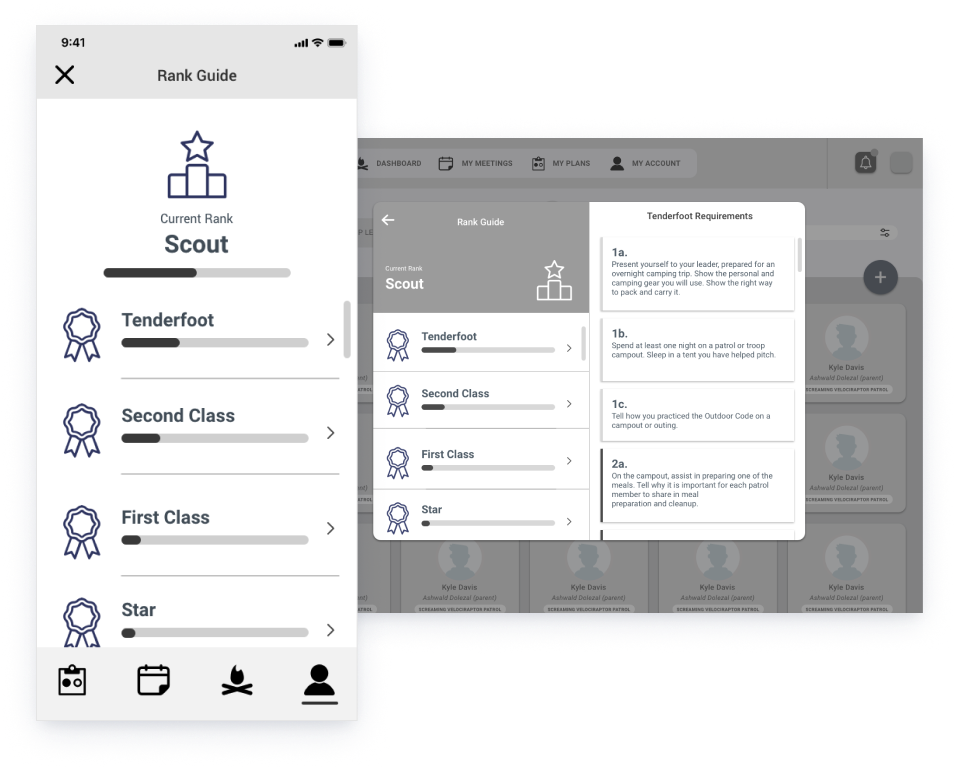CASE STUDY
Scouts BSA
Leader App
Helping youth leaders level up scouts to increase participation and engagement within the troop.

Project Background
In order to guide scouts to a higher rank within Scouts BSA (formerly Boy Scouts of America), youth leaders and troop leaders meet in-person and plan what will be done over a year on paper in a conflagration of groupthink and preference. Troop leaders will lend guidance to what is possible, but it is largely up to the youth leaders as to what they will work on within a given month (and year).
Scoutbook, an app used to manage the entire scouting experience, is starting to show its age despite being designed in-house at Scouts BSA a year ago. The app isn’t serving the needs and work of troop leadership due to a distinct lack of features relevant to guiding scouts to where they need to be.
The Problem
Scouts BSA has a scout retention problem. Youth leaders and troop leaders need a way to help their scouts rise in rank so that scouts feel engaged and rewarded for their progress. Scouts who don’t make it to the rank of Scout First Class within the first year are 80% likely to drop out of Scouts BSA.
Scouts BSA tasked me with learning as much as I could about the organization, how scouts rise in rank, and how plans and meetings are created, so that I could design an app that will serve the needs of the troop leadership in keeping scouts on track.
The Solution
I designed the Scouts BSA Leader app, a system that helps youth leaders and troop leaders understand where their scouts are (by rank and badge) and what they'll need to do (recommendations) to efficiently achieve the rank of First Class and beyond.
The app uses assistive technology that trains on facets to learn and suggest program features (activities, events, games, and materials) in the building of plans and meetings in order to provide for opportunities of friction and lift necessary to rise in rank in the organization.
The Impact
SBSA considered this engagement a success. After delivering the wireframes and assets to the client, we learned that participants had a 88% success rate in working through all of the scenarios.
Roles & Responsibilities
- Domain research
- Desk research
- Interviews
- Needs analysis
- Requirements analysis
- Personas and empathy maps
- Information architecture
- Interaction design
- Low-fidelity wireframes
- High-fidelity wireframes
- Prototypes
- Structured ideation
- Responsive design
Tools
- Sketch
- InVision
- Google Docs
- Zeplin